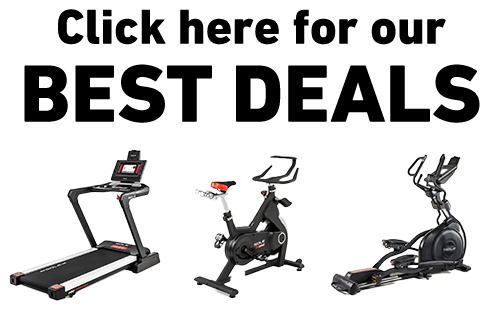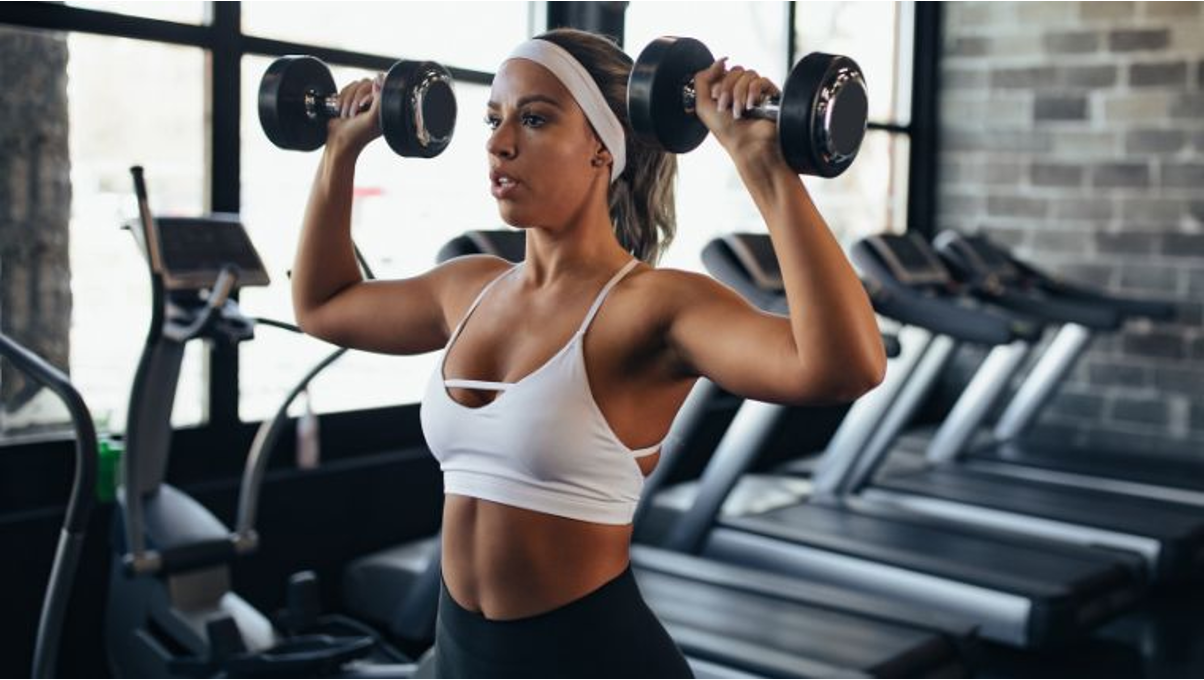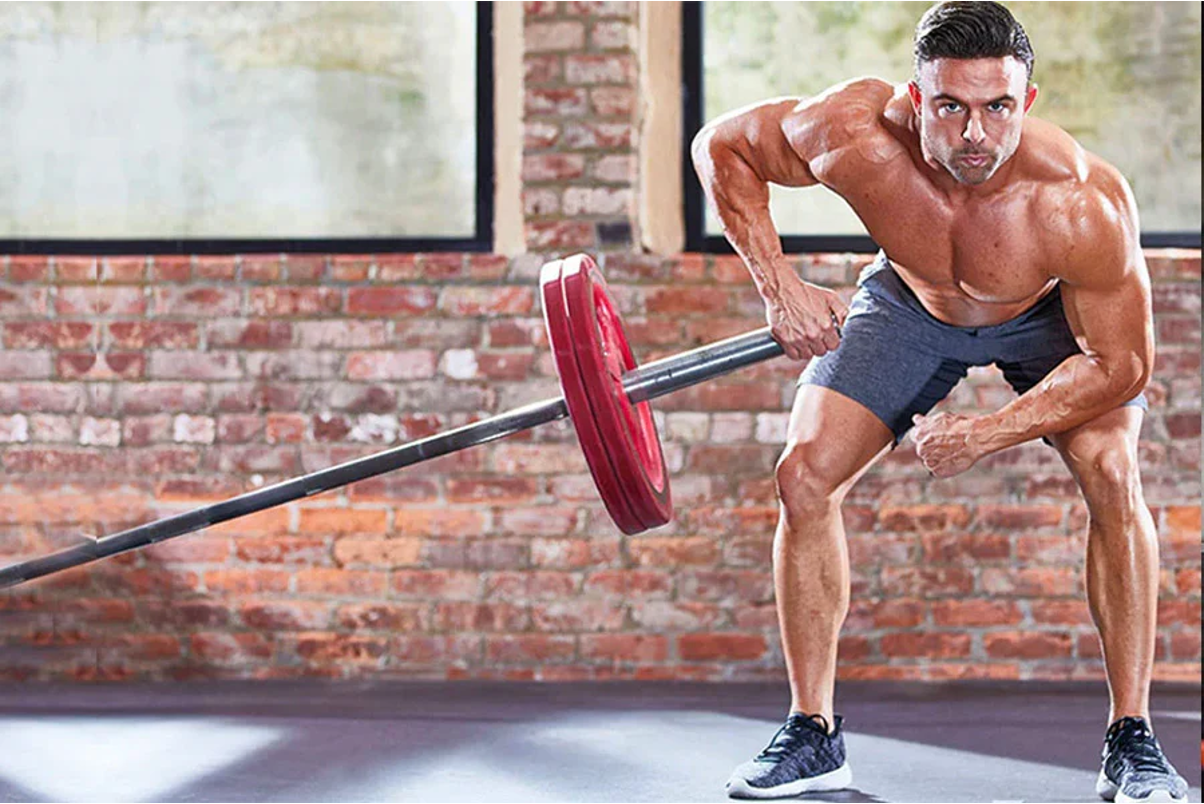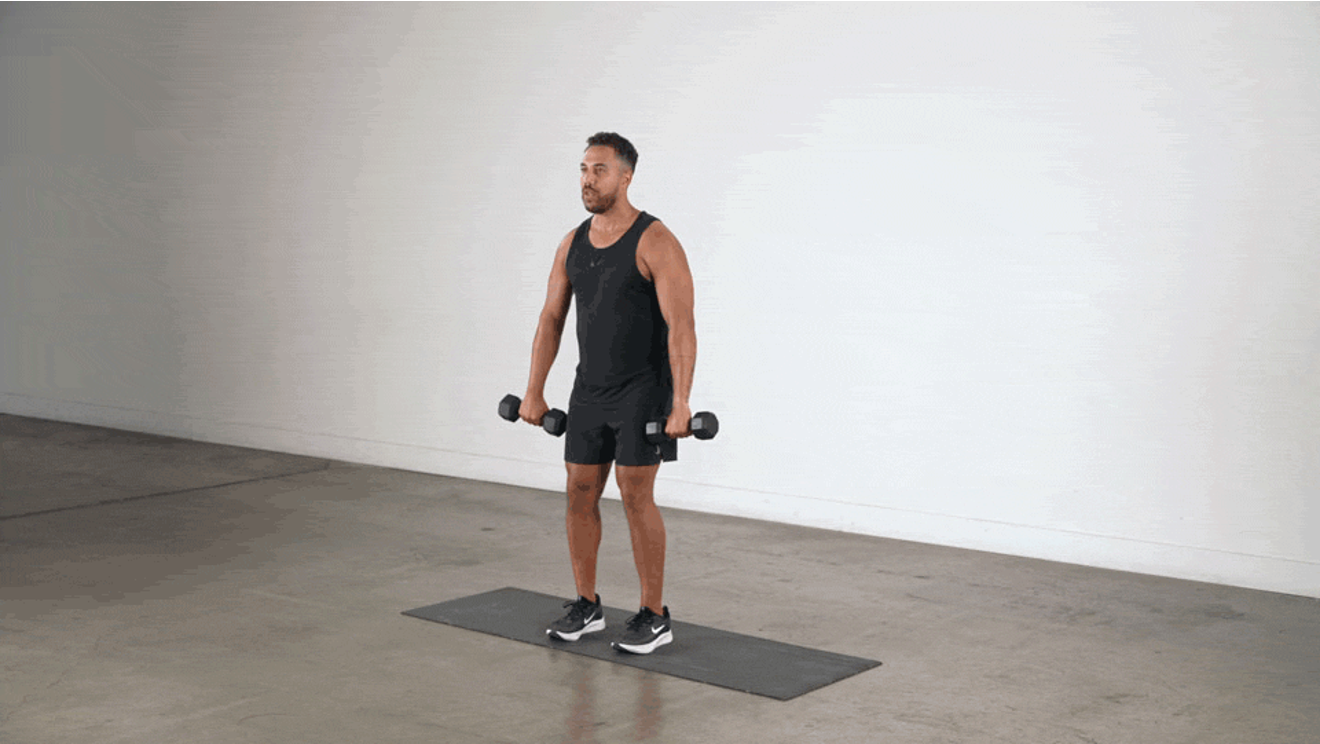Key Takeaways
- The Cuban Press is a compound shoulder move that beefs up your rotator cuff while making your shoulders more mobile and stable.
- The exercise hammers your deltoids and rotator cuff first, with your traps, biceps, and core jumping in to help.
- Start light, seriously light, to nail the form and avoid the shoulder injuries that happen when people ego-lift this movement.
- Do Cuban Presses regularly and watch shoulder pain disappear while your posture improves (those muscles pull your shoulders back where they belong).
- SOLE Olympic barbell and adjustable dumbbells give you the perfect tools for Cuban Presses.
Cuban Press: Shoulder Game-Changer
The Cuban Press gained popularity in Olympic weightlifting circles where Cuban athletes were known to frequently incorporate this rotational pressing movement. Today, it's recognized by strength coaches worldwide as a superior shoulder exercise that delivers multiple benefits in one efficient movement.
The Cuban Press stands out from typical shoulder exercises by combining multiple movement patterns into one fluid motion. Unlike isolated shoulder presses or lateral raises, the Cuban Press adds external rotation before the pressing phase, which creates a more complete shoulder strengthening exercise. This makes it gold for athletes and anyone who wants shoulders that can handle heavy loads without falling apart.
What sets this exercise apart is that it builds up those forgotten rotator cuff muscles while also pumping up your visible deltoids. This balance between strength and stability is key for keeping your shoulders healthy long-term. Too many people chase big shoulders without working the stabilizers, then wonder why they get hurt.
|
At SOLE, we're proud to offer top-quality exercise equipment designed for home and gym use. Our machines are built to meet the highest standards of durability and performance, making them ideal for fitness enthusiasts at any level. SOLE Products
|
Muscles Targeted
Primary Shoulder Muscles
Your deltoids are the main players in the Cuban Press. The front delts fire hard during the press, while your side and rear delts work during the upward row and external rotation. Your rotator cuff muscles, the supraspinatus, infraspinatus, teres minor, and subscapularis, work overtime throughout the movement, especially during that crucial external rotation. These smaller muscles keep your shoulder stable but usually get ignored in typical workouts.
Supporting Upper Body Muscles
The Cuban Press gets help from several supporting muscles. Your traps, especially the mid and lower parts, stabilize your shoulder blades throughout. Your biceps kick in during the initial upward row. Your forearms, including the brachioradialis, control the weight during rotation and pressing.
The serratus anterior (that cool muscle on your ribs) keeps your shoulder blade locked against your ribcage, giving you a solid base for pressing. Even your chest muscles help out during certain parts of the movement.
Core Engagement
Don't sleep on the core work happening during a proper Cuban Press. Your abs, obliques, and lower back fire up to stabilize your torso while you move, especially when standing. This core action stops you from arching your back too much during the overhead press, making the Cuban Press a sneaky core exercise on top of the shoulder benefits.
For anyone chasing functional fitness, this multi-joint pattern trains your body to transfer power from your legs through your core to your arms, which is exactly what happens when you throw a ball or lift heavy stuff overhead.
Key Benefits
1. Improved Rotator Cuff Strength
Your rotator cuff finally gets the attention it deserves with Cuban Presses. These four small muscles keep your shoulder joint stable but rarely get trained properly. The external rotation phase directly targets them, fixing a weak link in most programs. Strong rotator cuffs mean better performance in all pressing movements and way less chance of getting hurt.
2. Enhanced Shoulder Mobility
The Cuban Press takes your shoulders through a huge range of motion. You're hitting multiple planes of movement in one exercise. This keeps your shoulders mobile and prevents the stiffness that comes from doing the same movements over and over. Better mobility means easier daily life and better athletic performance.
3. Better Posture Development
Sitting hunched over all day? Cuban Presses fight back against that forward shoulder roll. They strengthen the muscles that pull your shoulders back into proper position. Regular practice can reduce that nagging upper back and neck pain that comes from bad posture. You'll stand taller and feel better.
4. Reduced Injury Risk
Shoulder injuries suck, and they're crazy common. Cuban Presses act like insurance for your shoulders by fixing muscle imbalances before they cause problems. They address the weakness that happens when you do too much pushing without enough pulling and rotating. Prevention beats rehab every time.
5. Increased Functional Strength
This is real-world strength. The movement pattern transfers to throwing, lifting overhead, and basically any activity where your arms go up. Athletes love Cuban Presses because they build strength that actually shows up in sports performance.
Perfect Cuban Press Form
Nailing the Cuban Press takes practice. You need to master each phase for maximum benefit and minimum injury risk. (Image courtesy of LiftManual)
Starting Position Setup
Stand with feet shoulder-width apart, knees slightly bent. Hold the bar with an overhand grip, hands just outside shoulder width. Let the bar hang at arm's length in front of your thighs. Pull your shoulders back and down like a proud chest. Engage your core like someone's about to punch you in the stomach. This is your home base.
External Rotation Phase
Pull the bar up like you're doing an upright row, leading with your elbows. Stop when your elbows hit shoulder height so that the bar is around chest level. Now for the money move: keeping your elbows at shoulder height, rotate your forearms up until they point to the ceiling. You should look like a football goal post. This external rotation is what makes the Cuban Press special.
Press Movement Execution
From that goal post position, press the weight straight up until your arms are fully extended overhead. Keep your shoulder blades pulled together, don't let them creep up toward your ears. The press should feel smooth and controlled, with your biceps ending near your ears at the top. Squeeze for a second at the top to really feel those shoulders working.
Controlled Lowering Technique
Coming down is just as important as going up. Reverse the whole movement with control; lower from the press back to the goalpost position. Then rotate your forearms back down to the high row position. Finally, lower the bar back to the starting hang. This controlled descent builds muscle and teaches proper shoulder mechanics.
- Keep tension the entire way down
- Go slower on the way down than up
- Keep your core tight to protect your back
- Maintain pulled-back shoulders throughout
- Breathe steady, exhale up, inhale down
Too many people rush the lowering phase, basically dropping the weight. This kills the effectiveness and ups the risk of injury. (Image courtesy of BarBend)
Common Form Mistakes
Weight Selection Errors
The biggest mistake is going too heavy. This forces you to cheat, arching your back, shrugging, or skipping the full rotation. Start stupid light; even 5–10 pounds per side challenges beginners. You need perfect form through the entire movement before adding weight. Remember, your rotator cuff muscles are tiny compared to your delts and can't handle big loads.
Elbow Position Problems
Letting your elbows drop below shoulder height during rotation is a common screw-up. This reduces rotator cuff work and stresses the joint unnecessarily. Keep those elbows up throughout the rotation and press. Think "perfect goal post", upper arms parallel to the floor, forearms vertical, creating clean 90-degree angles.
Skipping Full Rotation
Lots of people rush through or skip the external rotation, turning this into a basic upright row to press. That kills the main benefit: rotator cuff strengthening. Make sure you fully rotate until your forearms point straight up (or slightly back) before pressing. This rotation is what makes the Cuban Press special. Never cut it short for heavier weight or more reps.
Another issue is letting your shoulders roll forward, especially at the bottom. Keep your shoulder blades pulled back the entire time for proper mechanics and maximum benefit. Imagine squeezing a pencil between your shoulder blades from start to finish.
Beginners should practice with just a bar or even a broomstick first. Master the pattern before adding weight. If you feel clicking, popping, or pain, stop immediately. (Image courtesy of JEFIT)
Cuban Press Variations
Dumbbell Cuban Press
Dumbbells let each arm move naturally and independently. This often feels better on the wrists and exposes strength differences between sides. Hold a dumbbell in each hand and follow the same movement pattern. The dumbbell version also lets you rotate a bit more during the external rotation phase, potentially hitting the rotator cuff harder.
Resistance Band Option
Got shoulder issues or just learning the movement? Bands are perfect. Anchor a band at foot level and stand on it to perform the movement. The band gives accommodating resistance: lighter at the bottom, heavier at the top, with maximum tension where you're strongest. Super joint-friendly while still providing solid resistance. Great for rehab or warm-ups before heavy work.
Kettlebell Adaptation
The kettlebell Cuban Press adds instability that makes everything harder (in a good way). Hold the handle with the bell resting on your forearm. The offset weight makes your shoulder stabilizers work overtime.
Want a real challenge? Try bottoms-up kettlebell Cuban Press. Hold the kettlebell upside down with the bell pointing up. This demands crazy grip strength and shoulder stability. Even strong lifters find 26–35 pounds challenging bottoms-up. Start light.
Single-arm kettlebell work lets you focus on one side, great for fixing imbalances or just concentrating on form. Keep your torso straight—no leaning—to get the full benefit without cheating.
Seated Stability Version
Sitting down removes leg drive and forces strict form. No more using momentum to cheat the weight up. Sit on a bench with your back straight, core engaged, then perform the Cuban Press normally. It’s perfect for beginners learning the pattern or anyone with a lower body injury who still wants to train shoulders.
The seated version makes a killer finisher when your legs are already toast from other work. For extra spice, try it on a stability ball or BOSU. (Image courtesy of Muscle & Strength)
Effective Alternatives
Face Pulls
Face pulls are rotator cuff gold. They nail your rear delts and external rotators like the Cuban Press rotation phase. Set a cable or band at head height, grab the rope ends, and pull toward your face while separating your hands. End with the rope on either side of your head, shoulder blades squeezed.
Face pulls rock for fixing that forward shoulder posture from desk work. They balance out all the pressing most people do. They’re easy to scale for any fitness level and super shoulder-friendly.
YTWLs
This killer series hits your shoulders from every angle. Lie face-down on an incline bench and make letter shapes with your arms. Y works upper traps and serratus, T hits middle traps and rear delts, W targets rhomboids and external rotators, L isolates the external rotators. Use light dumbbells or just bodyweight.
Shoulder External Rotations
This isolation move directly targets your external rotators. Stand with your elbow bent 90 degrees against your side. Hold a light dumbbell or band and rotate your forearm outward, keeping your elbow glued to your side. It’s simple but effective.
This isolates the rotation part of the Cuban Press. It’s great for building up to the full movement or strengthening weak rotator cuffs. Physical therapists love this one for shoulder rehab, and it can be done daily as shoulder maintenance.
Your Shoulder Health Arsenal Starts with SOLE
Listen, if you're serious about bulletproof shoulders that actually work in real life (not just look good in tank tops), you need the right tools. SOLE’s got your back!
The SW155 Adjustable Dumbbells are clutch for Cuban Presses. You need to start embarrassingly light to nail that external rotation, and SOLE's adjustable system means you're not buying a whole rack of baby weights. Just dial down to 10–15 pounds and focus on perfect form.
The balanced construction of the SW155 Adjustable Dumbbells keeps things stable during that tricky rotation phase where cheaper dumbbells would wobble like a drunk penguin.
Once you've mastered the movement pattern, the SW111 Olympic Barbell takes your Cuban Press game to the next level. Its knurled grip gives you confidence during the entire movement sequence, from upright row through rotation to press. No slipping, no readjusting, just smooth shoulder gains.
Here's what's brilliant: you can use the same equipment for your entire shoulder workout. Heavy overhead presses with the barbell, then strip it down for Cuban Presses. Or grab those adjustable dumbbells for everything from lateral raises to face pulls. It's like having a physical therapist's office and a powerlifting gym in your spare bedroom.
The SOLE+ App throws in guided shoulder routines that show you exactly when and how to program Cuban Presses. No more guessing if you're doing too much or not enough, just follow the plan and watch those shoulders transform.
Check out the SOLE strength collection today and build the home gym that keeps you lifting for life!
Frequently Asked Questions (FAQs)
How much weight should I use for the Cuban Press?
Start way lighter than your overhead press, like 30-50% of that weight. Most beginners need just an empty barbell (45 pounds) or even a lighter training bar. With dumbbells, most guys should start with 5–15 pounds, women with 2.5–10 pounds per hand. Those external rotator muscles are small and can't handle big loads.
Can beginners safely perform the Cuban Press?
Absolutely! Beginners can do Cuban Presses safely by starting super light (maybe just bodyweight or tiny dumbbells) and focusing on the movement pattern before adding real weight. Actually, beginners often benefit big time from this exercise. It teaches good shoulder mechanics right from the start.
How often should I include Cuban Press in my workouts?
For most people, 2–3 times weekly hits the sweet spot without overworking those rotator cuff muscles. Newbies should start twice weekly, while advanced lifters might go three times with different variations. If your shoulders stay sore more than 48 hours after training, dial back to once weekly until recovery improves.
Why does my neck hurt during Cuban Press?
Neck pain usually means you're tensing your upper traps too much, probably shrugging instead of keeping shoulders down and back. Focus on "packing" your shoulders by actively pulling them down. Another culprit is forward head position. Keep your chin tucked slightly instead of jutting forward during the press.
Dropping the weight and focusing on shoulder blade position usually fixes this. If pain continues despite form fixes, see a physical therapist or sports medicine pro.
I'm switching from machines to free weights. Are SOLE dumbbells good for learning Cuban Presses?
SOLE dumbbells are perfect for this transition! Coming from machines, your stabilizer muscles are probably sleeping on the job, and Cuban Presses will wake them up real quick. The SW155 lets you start super light, like 10 pounds per hand, which is exactly what you need when learning this coordination-heavy movement.
The best part is that as you get stronger and more coordinated, you just turn the dial instead of buying new dumbbells every few weeks. Machine users often struggle with the free-weight wobble at first, but SOLE's balanced design minimizes that shaky feeling that makes you look like you're having a seizure. Start with the dumbbell version for a few weeks to get the movement pattern down, then maybe graduate to the SW111 barbell once your shoulders know what they're doing.







Leave a comment
This site is protected by hCaptcha and the hCaptcha Privacy Policy and Terms of Service apply.